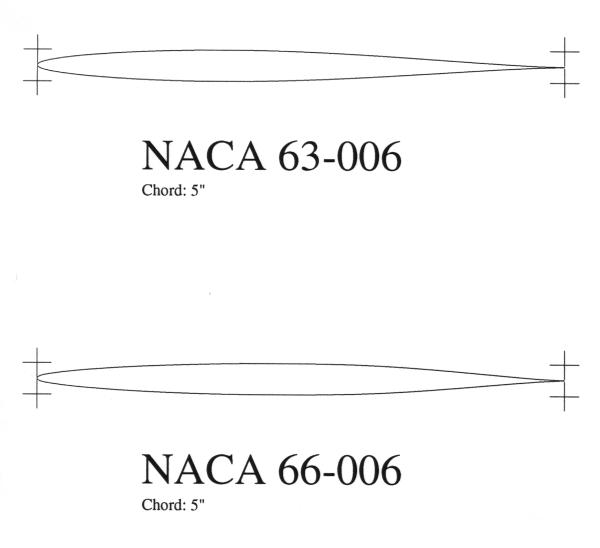Two NACA 6% Symmetrical Airfoils
At the very beginning of the NACA in the early 1920's an ambitious program of wind tunnel design and construction was started out of which grew the world famous variable density tunnel at NACA Langley. At the same time a study of airfoil performance was initiated using essentially data gathered in Europe. It was found that the thickness distribution of efficient wing sections such as the Göttingen 398 and the Clark Y were nearly the same when their camber was removed. The thckness distribution of the NACA four-digit sections was modeled after these foils with an empirical equation. In 1932 the first series of tunnel tests on a family of airfoils derived in this manner had completed testing and were reported on. Further work resulting in the NACA five-digit and '1 series' sections all used this same thickness. An idea of the ideal pressure distribution, one that might work to higher angles of attack before stall and preserve laminar flow over a much larger porton of the wing was developed and new theoretical methods allowed the design of an airfoil from its pressure distribution. This work lead to the famous 'laminar flow' airfoils and with the notable success of the P-51, widespread adoption. At the end of World War II a compendium of all this work was published (1949) and is the source of the data here. The thinnest airfoils designed were 6% thick so I have chosen the original circa 1930 NACA 0006 and the 'laminar flow' 63-006 to show here. |
Bill Lee made this plot of the 6% symmetriacl sections that have minimum pressure at 30% and 60% of the chord, respectively.

|

 To NACA 0006 figure
To NACA 0006 figure